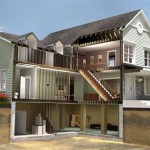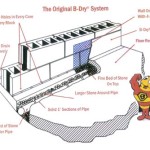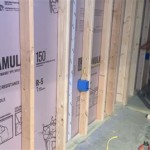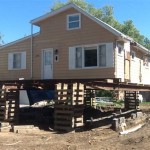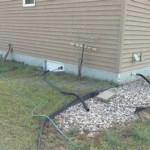How to Build a Basement Window Well: A Comprehensive Guide
Basement window wells serve a critical purpose: preventing soil and water from directly contacting basement windows. They provide a protective barrier, allowing natural light and ventilation into the basement space while mitigating the risk of water damage and structural issues. Constructing a window well is a project achievable for homeowners with moderate DIY skills and a willingness to invest the necessary time and effort. This article provides a detailed guide to the process, covering planning, material selection, excavation, and installation.
Before embarking on this project, it is crucial to consult with local building codes and regulations. Specific requirements may dictate the dimensions, materials, and installation methods permissible in a given jurisdiction. Contacting the local building department will prevent potential compliance issues and ensure the project adheres to safety standards.
Planning and Preparation
Effective planning is the cornerstone of a successful window well installation. This stage involves assessing the existing window situation, determining the appropriate well dimensions, and selecting the most suitable materials. Neglecting this step can lead to costly errors and performance issues down the line.
The first step is to measure the existing basement window. Accurate measurements of both the window’s width and height are essential for determining the required size of the window well. The well should extend beyond the window on all sides to provide adequate clearance and prevent soil pressure against the glass. A general rule of thumb is to add at least 6 inches to the window's width on each side and ensure the well's height extends several inches above the top of the window frame. This clearance allows for debris removal and ventilation.
Next, assess the soil conditions surrounding the foundation. The type of soil will significantly impact the design and construction of the window well. Loose, sandy soil will require more robust support structures than dense, clay-like soil. Consider the potential for water runoff and drainage. Areas prone to heavy rainfall or poor drainage will require more elaborate drainage systems within the window well. A soil test can provide valuable information about the soil composition, drainage characteristics, and load-bearing capacity.
Material selection is another critical aspect of planning. Common materials for constructing window wells include corrugated steel, pre-cast concrete, and plastic. The choice of material depends on factors such as budget, aesthetic preferences, and expected load. Corrugated steel is generally the most cost-effective option, while pre-cast concrete offers superior durability and a more aesthetically pleasing appearance. Plastic window wells are lightweight and easy to install but may not be suitable for areas with heavy soil pressure.
Finally, gather all necessary tools and equipment before commencing the excavation. Essential tools include a shovel, pickaxe, measuring tape, level, wheelbarrow, safety glasses, work gloves, and a tamper. Depending on the size and scope of the project, a mini-excavator or trencher may be necessary to expedite the excavation process. Ensure all tools are in good working condition and that safety equipment is readily available.
Excavation and Foundation Preparation
Excavation is the most physically demanding aspect of building a basement window well. This stage involves removing soil around the existing window to create a cavity for the window well structure. Proper excavation techniques are crucial for maintaining structural integrity and preventing damage to the foundation.
Begin by marking the perimeter of the window well on the ground, using the measurements obtained during the planning stage. Clearly delineate the area to be excavated using stakes and string or marking paint. This will ensure accurate excavation and prevent accidental damage to surrounding landscaping or utilities.
Start excavating the soil within the marked perimeter, working gradually and maintaining a consistent slope. The depth of the excavation should be determined by the height of the window well, plus an additional allowance for a gravel base. The gravel base serves as a drainage layer, preventing water from accumulating at the bottom of the well. As a general rule, a gravel base of at least 6 inches is recommended.
During excavation, be mindful of underground utilities. Before digging, contact the local utility companies to locate and mark any buried lines. Striking a utility line can result in serious injury and damage to property. Exercise caution and dig carefully around marked utility lines.
Once the excavation is complete, prepare the foundation for the window well structure. This involves compacting the soil at the bottom of the excavation to provide a stable base. Use a tamper to compact the soil thoroughly, ensuring it is level and free of loose debris. A well-compacted base will prevent settling and ensure the window well remains stable over time.
Next, install the gravel base. Spread a layer of gravel evenly over the compacted soil, ensuring it covers the entire excavation area. Use a rake to distribute the gravel evenly and then compact it with a tamper. The gravel base should be level and smooth, providing a solid foundation for the window well structure.
Window Well Installation and Drainage
After the excavation and foundation preparation are complete, the window well structure can be installed. This stage involves assembling the chosen material around the window, securing it to the foundation, and implementing a drainage system to prevent water accumulation. Proper installation is essential for the longevity and effectiveness of the window well.
Begin by positioning the window well structure within the excavated area, ensuring it is centered around the window. If using corrugated steel, overlap the sections and secure them together using bolts or screws. If using pre-cast concrete, carefully lower the sections into place using appropriate lifting equipment. For plastic window wells, follow the manufacturer's instructions for assembly and installation.
Secure the window well structure to the foundation wall using appropriate fasteners. The type of fastener will depend on the material of the foundation wall. Concrete walls typically require concrete screws or anchors, while wood walls may require lag bolts. Ensure the fasteners are securely tightened to prevent the window well from shifting or separating from the foundation. It is essential to consult with a structural engineer or experienced contractor to ensure correct anchoring, especially in areas with challenging soil conditions.
Implement a drainage system to prevent water from accumulating in the window well. This typically involves connecting the window well to a perforated drain pipe that leads to a drainage system or a dry well. The drain pipe should be buried below the gravel base and sloped to ensure proper water flow. A filter sock or landscape fabric should be wrapped around the drain pipe to prevent soil from clogging the perforations.
Backfill the area around the window well with soil, compacting it in layers to prevent settling. Use a tamper to compact the soil firmly, ensuring it is level with the surrounding ground. Slope the soil away from the foundation to direct water away from the house. This will help prevent water from entering the basement through the window well.
Consider adding a window well cover to further protect the window and prevent debris from entering the well. Window well covers are available in various styles and materials, including clear plastic, metal grates, and custom-built designs. A cover will also prevent small animals and children from accidentally falling into the well.
Finally, inspect the completed window well for any potential problems or areas that require further attention. Ensure the structure is securely anchored, the drainage system is functioning properly, and the surrounding soil is properly compacted. Address any issues promptly to prevent future problems.

How To Install A Terraced Window Well In Your Basement Diy

How To Install Egress Window Well What You Need Know

How To Tips Window Well Installation Simple Decorating

How To Install A Basement Egress Window Acculevel

Progress Basement Bedroom Window Well Midmod Midwest

Basement Window Upgrade D Oh I Y

8 Easy To Make Diy Window Well Cover Ideas Basement

How To Install Egress Window Well What You Need Know

Egress Basement Window Installation How To Diy Home Improvement Youtube

Common Egress Window Diy Problems Foundation Repair Permanent Solutions To Your Thrasher News And Events For
